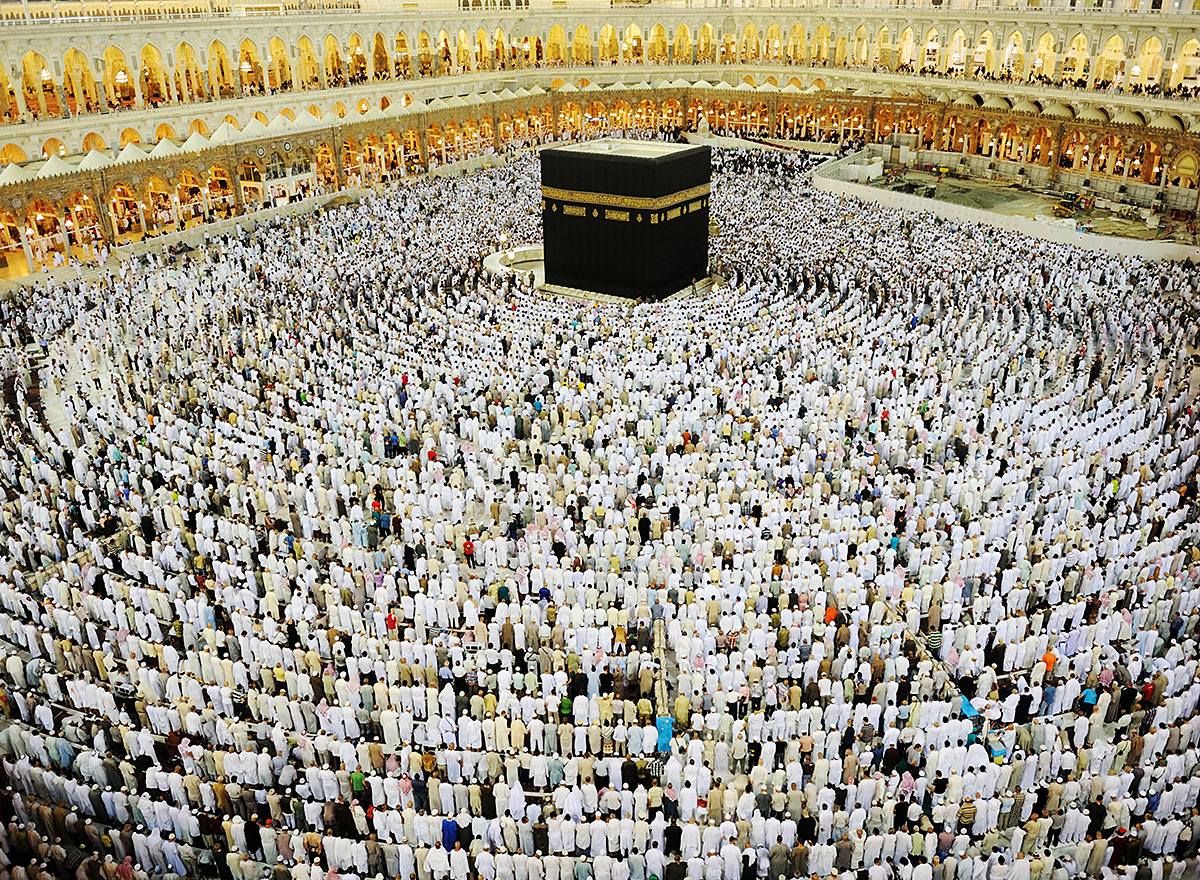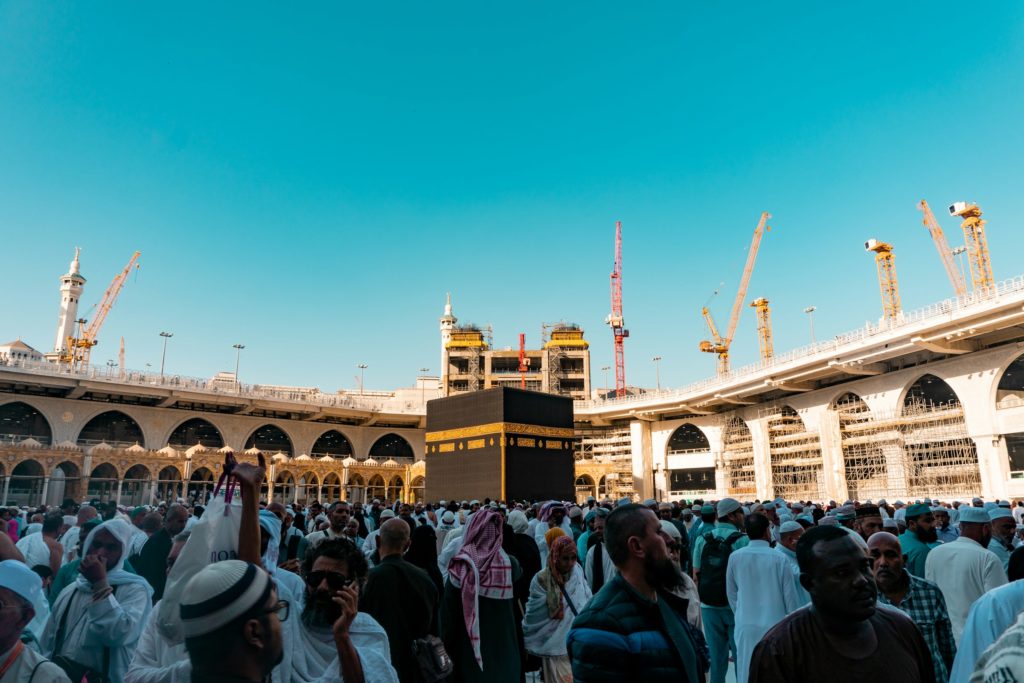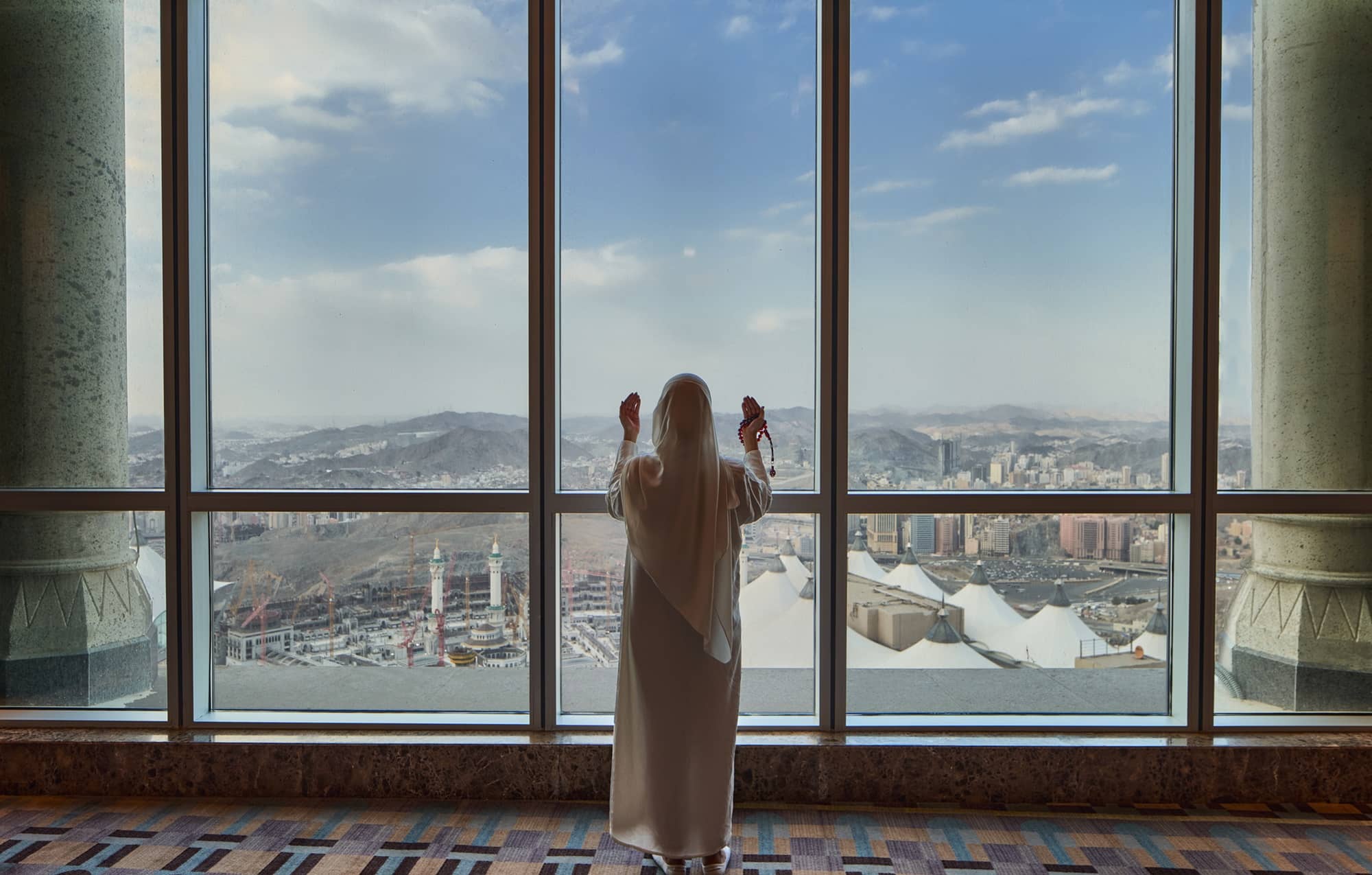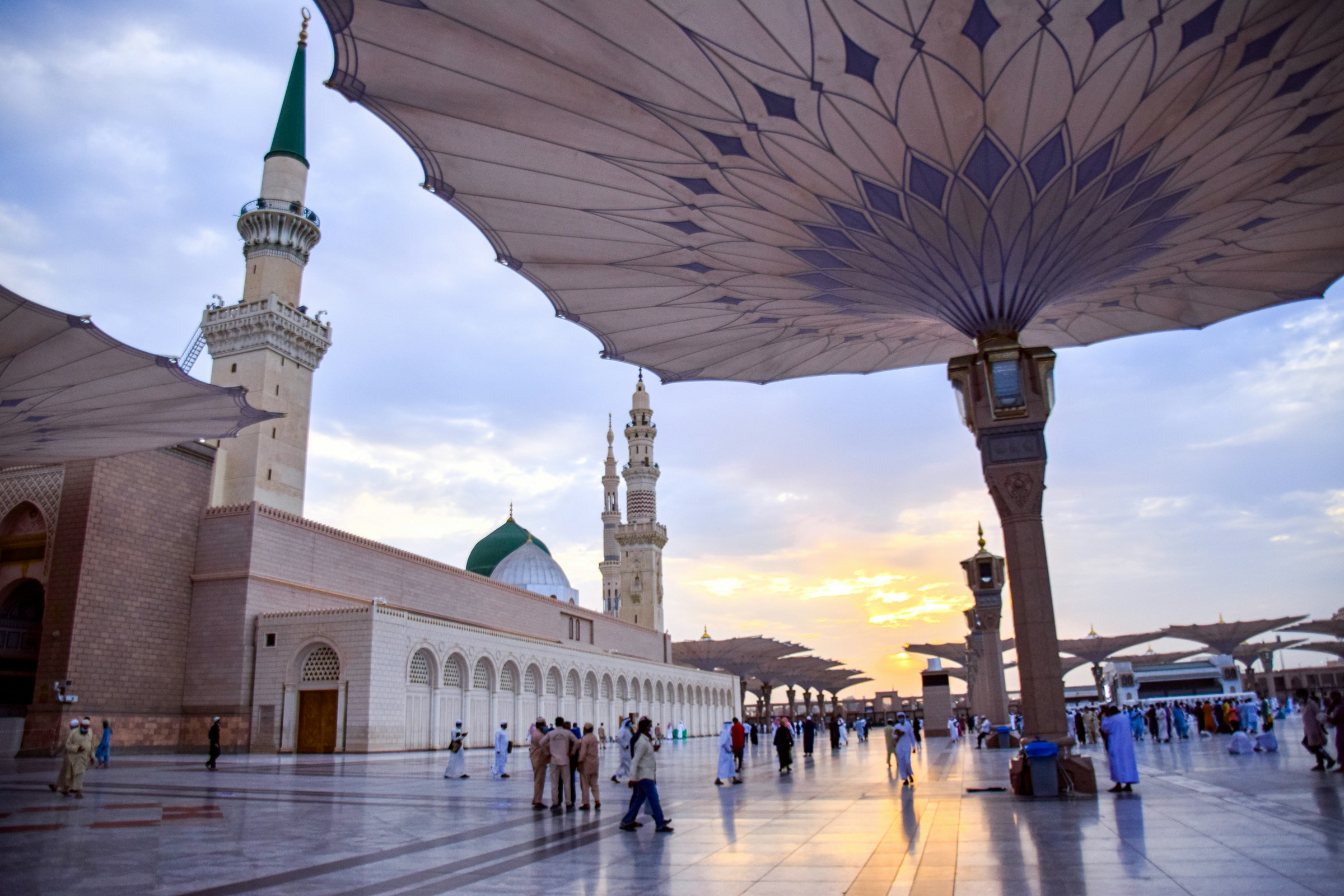Below are the ten important Hajj rituals step by step:
I. Reassume Ihram and the intention to perform Hajj
After completing Umrah rituals, pilgrims must assume the state of Ihram and declare their intentions to do Hajj.
Note: repeat step 1 of Hajj Preparation
II. Travel to Mina
Soon after the observing the morning prayers, all pilgrims must head to Mina (a town in Mecca), where they stay an entire day carrying out ritual prayers – Duhr, Asr, Maghrib, Isha, Fajr and Qasr – as stated in the Quran.
III. Travel to Mt. Arafat to perform Wafuq
During the second day of Hajj, 9th day of Dhu-al-Hijjah, pilgrims travel to Arafat from Mina reciting Istaghfar and making supplications. Upon reaching Mount Arafat, pilgrims observe Duhr and Asr combined with Qasar prayers near the Jabal al-Rahmah from noon to sunset. This act is known as Waquf (standing before Allah).
IV. Offer Prayers in Muzadalifah
Post sunset, pilgrims head to Muzadalifah (a town between Mina and Mt. Arafat) to observe the evening prayers and rest the night until Fajr prayers in preparation for the next day’s ritual of stoning the devil. Pilgrims pick up 49 pebbles of similar size for Rami.
On the 10th day Dhu al-Hijjah, pilgrims leave for Mecca before sunset to do Tawaf al-Ifadah and Sa’iy and get back to Mina to perform Rami, Nahr and Halq.
V. Perform Rami in Mina
On the 11th and 12th days of Hajj, pilgrims must complete the stoning of the Devil or Rami. Before Sunrise, pilgrims head back to Mina and participate in a ritual known as ‘Stoning the devil’. Seven pebbles (of similar sizes) are thrown at a stone structure known as Jamrat al-Aqabah. This is an act carried out at noon on each day. All pilgrims are required to leave for Mecca before sunset on the 12th day of Dhu al-Hijjah.
VI. Animal Sacrifice – Nahr
The culmination of the stoning ceremony calls for an animal sacrifice. For this pilgrims can purchase sacrifice voucher or a coupon, which states that a sacrifice has been made in their name. the sacrificial animal is either a lamb or a camel. The animal is butchered and its meat is packed and shipped to other Middle Eastern countries or is fed to the poor.
VII. Halq (shaving the head) or Taqsir (clipping or shortening of the hair for men and women)
Men should get their head completely shaved, or get their hair clipped. While women are forbidden to shave their heads and only allowed to have a lock or strand of their hair clipped. The act of cutting the hair symbolizes one’s detachment from physical appearances and complete subjection to Allah.
VIII. Perform Tawaf and Sa’iy
IX. Repeat Stoning at Mina After Sunset On the 11th and 12TH day of Dhu al-Hijjah
The stoning ritual is repeated by throwing pebbles at two other monuments other than Jamrat al Aqabah – Jamrat Oolah (the first Jamrat) and Jamrat Wustah (middle Jamrat). Pilgrims face the Jamarah (main pillar), with the Mecca on their left and Mina on their right, stone it with seven small pebbles while reciting takbeer.
X. Perform the Farewell Tawaf
The next and the final step is the farewell Tawaf, circumambulating the Kaaba anti-clockwise seven times and touching or kissing the Kaaba if possible. Pilgrims reflect on their experience and thank Allah for everything, while circumambulating the Kaaba.
On completing the Tawaf, pilgrims can proceed to collect their belongings, leave Kaaba by setting their left foot out first and making supplications while doing so. This final step marks the end of Hajj rituals.
Get the most out of your Hajj pilgrimage with Accor hotels in Makkah and take advantage of the special offers for Hajj & Umrah.









